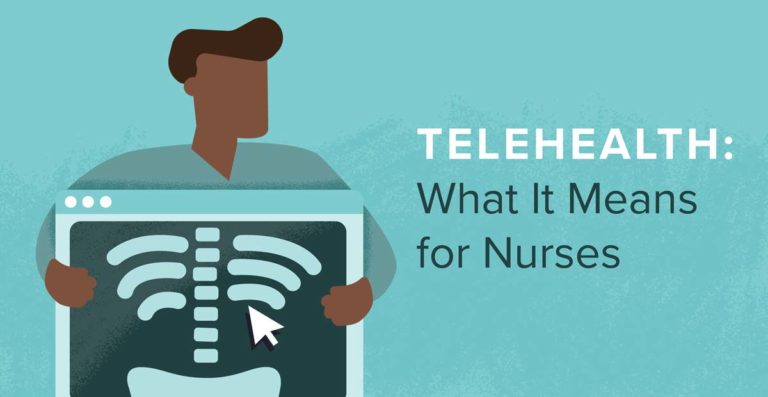Over the last 25 years, the healthcare industry has been slowly adopting what’s known as telehealth, or the electronic delivery of healthcare services using live video, audio, instant message, and email. For many patients, making the trip to the doctor’s office, hospital, or a specialist can be costly and challenging. Telehealth has the potential to help expand patient access to care by getting rid of some of these barriers. Patients can get the information they need from a licensed professional from the comfort of their home or on the go, making healthcare more convenient for all types of patients. Nurses can improve patient outcomes by understanding the benefits of telehealth, who stands to gain from these services, and how these services should be delivered.
How to Define Telehealth
According to the Institute of Medicine (IOM), telehealth is defined as “the use of electronic information and communications technologies to provide and support health care when distance separates the participants.” With over 42 million Americans living in rural areas, many patients lack the means to travel to the nearest healthcare provider. Many communities have only one doctor, which drastically limits patient access to care. If a patient is physically unable to move, telehealth can help healthcare professionals administer care without the need for costly ride-sharing services and ambulances.
Telehealth can be administered in a variety of ways. Synchronous telehealth is when a patient interfaces with a healthcare professional using live video and audio, usually from the comfort of their home. Mobile health refers to patients that use mobile devices like smartphones and laptops to interface with a healthcare professional. Asynchronous telehealth is when a patient interfaces with a healthcare provider in real-time using instant messages or email. Healthcare providers can also use remote monitoring to monitor a patient’s condition and vitals after they leave the hospital using specialized equipment.
What Telehealth Means for the Nursing Community
In many of these rural communities, a nurse may be a patient’s primary point of contact regarding care. Some nurses may serve as a primary care provider, which means they will be responsible for caring for potentially hundreds of patients spread out across a vast terrain. Nurses in both rural and urban areas can help their patients make use of telehealth by educating them on the benefits of these services and how they should be used.
Some patients may not be aware of telehealth as a more convenient alternative to an in-person meeting. Nurses can help their patients understand when and how to contact them using telehealth. Their patients can use telehealth to save money on their healthcare expenses, saving them a trip to the hospital. Patients can also correspond with a nurse using telehealth to find out if they need to make the trek to the closest hospital or doctor’s office.
From Hospital to Home
If a nurse is getting ready to discharge a patient with an urgent medical condition, they can keep an eye on the patient to make sure their state doesn’t deteriorate over time. If their condition does get worse, nurses can take action immediately by contacting the patient and scheduling a visit. Nurses can use telehealth and remote monitoring to reduce mortality rates in these kinds of situations.
The Challenges of Implementing Telehealth
As beneficial as telehealth can be for healthcare providers and their patients, implementing a digital healthcare delivery system in some communities can be difficult. Patients need to make sure that these services are covered under their health insurance policy. Setting up video conferencing centers and acquiring the right equipment can also be a costly challenge for some nurses and healthcare facilities.
Some nurses and patients may also need specialized training when it comes to using the internet and navigating a telehealth system. Healthcare providers also need to make sure that only licensed and certified professionals are advising patients. Some patients may get faulty or inaccurate information if they interface with an individual that doesn’t have the proper credentials.
Nurses can play an integral role when it comes to implementing telehealth in a healthcare facility and helping their patients get familiar with this technology. Telehealth is on the rise across the U.S. healthcare system as more insurance companies start including these services in their coverage plans. The more nurses understand about telehealth, the better they can help their patients make use of these services.
